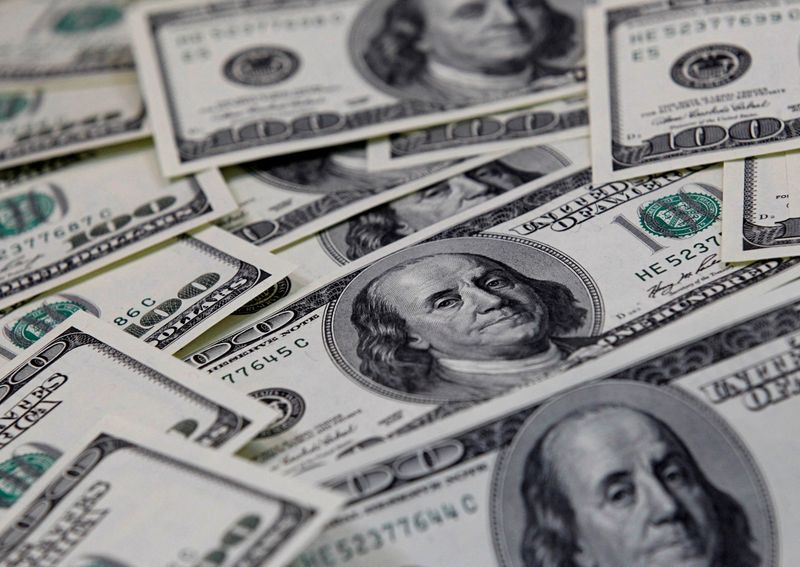 © Reuters. FILE PHOTO: U.S. one hundred dollar notes are seen in this picture illustration taken in Seoul February 7, 2011. REUTERS/Lee Jae-Won/File Photo
© Reuters. FILE PHOTO: U.S. one hundred dollar notes are seen in this picture illustration taken in Seoul February 7, 2011. REUTERS/Lee Jae-Won/File Photo
NEW YORK (Reuters) - The U.S. dollar may have already seen its highest levels for the year given growing evidence of slowing inflation and a weakening labor market in the world's largest economy, Barclays (LON:BARC) and Deutsche Bank (ETR:DBKGn) wrote in research notes on Wednesday.
Apart from domestic factors, Barclays said the improving European energy supply and demand situation as well as China's reopening expectations are good enough reasons to unwind some of the risk premium that has supported the dollar this year.
Barclays has advanced the downturn in the dollar into the fourth quarter this year, from its previous forecast of the first quarter of 2023.
Since late September, the dollar index has fallen about 8%.
The British bank has also revised its end-2022 forecast for euro/dollar to $1.03, from its previous estimate of $0.97.
"The upside risk to the EUR consists of sufficiently improved gas and oil supplies so that the possibility of shortages is no longer a risk factor constraining production," Barclays said, adding that peace or a ceasefire in the Russia-Ukraine war would be a further boost.
Deutsche, on the other hand, expects the euro to end the year at $1.05.
That said, the German bank noted it still expects a choppy market for the dollar, with one major issue: the extent and speed of U.S. disinflation, or an overall slowing of the rise in overall prices.
"For a big dollar downtrend to kick off, we really need more confidence that U.S. inflation – and by extension Fed Fund pricing - is sustainably coming down," wrote Deutsche.
Deutsche is tracking the shape of the U.S. yield curve to determine where the dollar is headed. The bank said the U.S. 5-year/30-year yield curve needs to steepen aggressively to start a big dollar downtrend.
That curve has steepened since late September, with the spread currently at 4.4 basis points.

